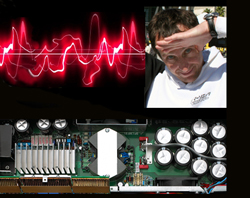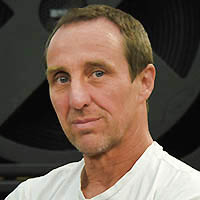Here is a way to increase the actual power delivered to your loudspeakers by 5 percent to 15 percent just by doing a simple wiring change.
First, a bit about power amplifiers. Look at the typical power amp as a device that has two reservoirs of energy – one positive, one negative.
The audio signal sent to the amp acts as a control to release the energy from the reservoirs to the output. But the problem is that when an amp is driven hard, the energy from the reservoirs is depleted.
The AC power going to the amp, from the wall or power distro, refills these reservoirs at a rate of 60 times a second in the U.S. and at 50 times a second in many other countries.
Yet the audio the amp is putting out drains the power at much higher rates. The problem is further compounded by the fact that most amps are stereo, and both channels often carry very similar signals, so both channels are fighting for the limited supply of available energy. This “fighting for power” issue is my focus here.
A bit of technical, kind of… But here goes.
Imagine a kick drum beat or simpler yet, a positive pulse. Both the “A” and “B” amplifier channels pull energy from the “positive reservoir” at the same time while the negative reservoir does nothing.
Then a negative pulse comes along and both channels fight for the available energy in the negative reservoir. Meanwhile, the wall/distro AC is refilling these reservoirs at a relatively slow rate.
Even when the AC is refilling, in larger systems or with long AC cable runs, the wall/distro voltage may not even be enough to refill them completely.
But what if there was a way that when the “A” channel was pulling power from the positive reservoir, the “B” channel could pull from “negative” reservoir?
Instead of both channels fighting for the same thing, they would take turns and use the available sources more efficiently. The system power draw would be more consistent rather than a series of positive and negative peaks.
Here’s the cool part… All that’s needed to use the amp in this more efficient way is to reverse phase on the signal going to one of the channels. How about the “B” channel? Sounds good, so now the “B” channel is doing the exact opposite of everything the “A” channel is doing.
In other words, when “A” pulls positive energy, then “B” pulls negative – and vice versa.
“But what about phase?” you ask. Good question.
The output to the loudspeakers from the “B” channel is now out of phase, and that’s bad (actually it’s reverse polarity, but you know what I mean).
It won’t sound good at all, and now there are all kinds of problems UNLESS you reverse the loudspeaker wires on the output of the “B” channel.
Perfect, now everything is in proper polarity, the amp uses power more effectively and your system just got a little bit louder.
Adding a polarity reverse adapter to every “B” channel in the system is kinda an irritating thing to do, but there’s an easy way when both amp channels are seeing the same signal. Nearly all professional power amps these days have a “bridge mono” switch on them somewhere.
All that this bridge mono switch does is reverse polarity to the signal going to the “B” channel. So that’s the solution: put the amp in bridge mono mode, wire it like a stereo amp on the outputs, don’t forget to reverse the loudspeaker leads on the “B” channel output, and that’s it.
Is it worth the effort?
A few years ago, I did this with a Crest 4801 and measured it on the bench. I did not do distortion measurements, just two 4-ohm loads, a scope, an AC meter and a signal generator.
The output power in normal stereo mode was 535 watts on channel “A” and 542 watts on channel “B” before I could visually see it clip on the scope. I used a 30 Hz tone and the power was calculated as RMS output voltage squared, divided by load resistance (4 ohms).
Simply flipping the switch on the back of the amp from stereo mode (inputs were “Y”ed) to bridge mono mode brought the output power up to 645 watts on channel “A” and 658 watts on channel “B”.
Free power, and about 14 percent more at that!
But will you hear the difference? The theory is solid and the testing proves it’s measurable, not to mention that it can’t hurt.
Amps that are run in bridge mono mode naturally benefit from the balanced power draw, and the advantages are more pronounced in amps driving low frequencies.
All of our main systems at Rat Sound use amps in bridged mode whenever possible, one of the things we do to keep our systems optimized.

Dave Rat is the co-founder and owner of Rat Sound, a leading sound reinforcement company based in California.
More Articles From Dave Rat
Dave Rat Transmission: Dynamic Versus Compressed
Dave Rat Transmission: Sometimes Sound Is About Time
Other Articles Of Interest
How Much Amplifier Power Is Needed (by Bruce Bartlett)
Unity Gain And Impedance Matching (by Dennis Bohn)
Real World Gear: A Look At The Latest Power Amplifiers















